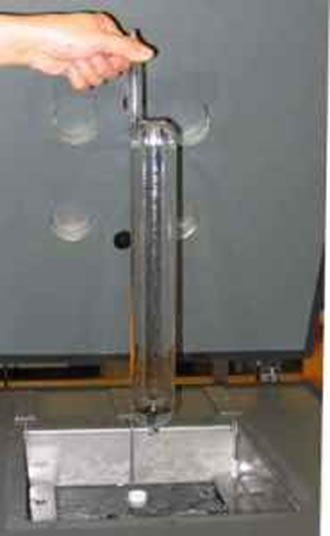Calibration Services
Temperature and Humidity: About Temperature Measurement
 Temperature Measurement
Temperature Measurement
The kelvin, symbol K, is the SI unit of the fundamental physical quantity "temperature", or more precisely "thermodynamic temperature". It is defined by taking the fixed numerical value of the Boltzmann constant k to be 1.380 649 × 10−23 when expressed in the unit J K−1, which is equal to kg m2 s−2 K−1, where the kilogram, metre and second are defined in terms of h, c and ΔνCs.
Because of the way earlier temperature scales were defined, it remains common practice to express a temperature in terms of its difference from 273.15 K, the ice point. A thermodynamic temperature, T, expressed in this way is known as Celsius temperature, symbol t, defined by:
t (in °C) = T (in K) - 273.15
The precise measurement of thermodynamic temperatures, for example with a gas thermometer, is very difficult. Practical temperature scales were therefore introduced to make use of instruments such as platinum resistance thermometers which are much easier to use and give much higher precision measurements.
The first International Temperature Scale was adopted in 1927, revised in 1948 as IPTS-48, revised again in 1968 as IPTS-68, and again more recently in 1990 as ITS-90. Officially SCL adopted the ITS-90 from 1 January 1990.
The Laboratory realises the ITS-90 by maintaining the following fixed point standards at:
- Triple point of argon (-189.3442°C).
- Triple point of mercury (-38.8344°C).
- Triple point of water (0.0100°C).
- Melting point of gallium (29.7646°C).
- Freezing point of indium (156.5985°C).
- Freezing point of tin (231.928°C).
- Freezing point of zinc (419.527°C).
- Freezing point of aluminium (660.323°C).
- Freezing point of silver (961.78°C).
In addition to the above fixed point primary temperature standards, the Laboratory possesses standard platinum resistance thermometers and standard type R thermocouples which are calibrated directly in ITS-90.
Apart from the above fixed points, calibration service covers the full range from -80°C to 1200°C, and caters for almost all practical thermometers such as liquid-in-glass thermometers, digital thermometers, thermocouple or resistance thermometers, etc.